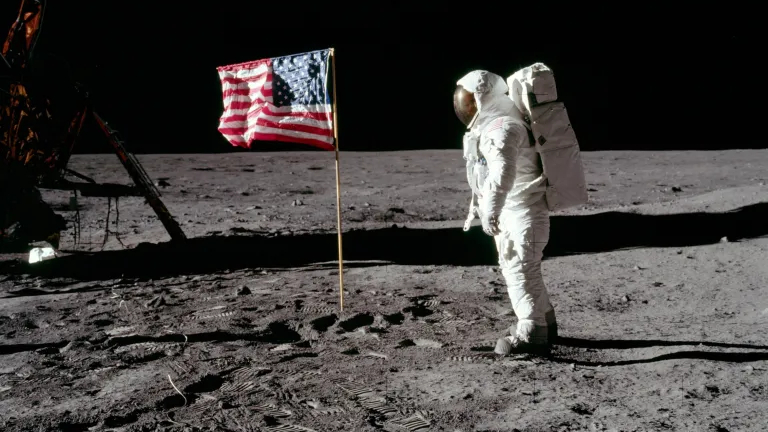The moon has been altered by human activity. Are we in a 'Lunar Anthropocene?'

When the Soviet Luna 2 probe crash-landed on the lunar surface in 1959, it became the first human-made object to touch the moon. And, according to a trio of academics, Luna 2’s impact also marked the dawn of a new age in the moon’s natural history: an age where humans began to alter the world in unprecedented ways.
They call it the "Lunar Anthropocene."
Their proposed moon age is a mirror to Earth's Anthropocene, a geological epoch defined by the timeframe within which human activity started warping our world. The Anthropocene has no official recognition — and even its proponents still debate when it truly began — but it's impossible to deny that, through everything, humans are permanently changing the planet. And we're doing it in an incredible amount of ways, from hunting species to extinction and pumping greenhouse gases into the air, to illuminating a once-dark night with electric lights and cutting down trees to make room for highways.
Related: Nuclear bombs set off new geological epoch in the 1950s, scientists say
In that spirit, academics now argue that humans have become the dominant force in shaping the moon's environment as well. Even though no humans permanently live on the moon, the authors argue that this Lunar Anthropocene began in 1959 when Luna arrived with a bang. Ever since then, we have moved the lunar regolith; we have left landers, flags, scientific experiments, golf balls, and human excrement.
"On the moon, we argue the Lunar Anthropocene already has commenced, but we want to prevent massive damage or a delay of its recognition," Justin Holcomb, an archaeologist at the Kansas Geological Survey, in a statement.
If a few scattered missions create a Lunar Anthropocene, then what comes next will be far, far more drastic. Humans are planning to send a new wave of missions to the moon in hopes of establishing a lasting presence and exploiting its resources.
Breaking space news, the latest updates on rocket launches, skywatching events and more!
Holcomb believes that space exploration on the moon should be protected as cultural heritage; he thinks recognizing the Lunar Anthropocene is key to preserving both those artifacts. "The concept of a Lunar Anthropocene aims to raise awareness and contemplation regarding our impact on the lunar surface, as well as our influence on the preservation of historical artifacts," he said.
The authors published their idea as a comment in the journal Nature Geosciences on Dec. 8.

Rahul Rao is a graduate of New York University's SHERP and a freelance science writer, regularly covering physics, space, and infrastructure. His work has appeared in Gizmodo, Popular Science, Inverse, IEEE Spectrum, and Continuum. He enjoys riding trains for fun, and he has seen every surviving episode of Doctor Who. He holds a masters degree in science writing from New York University's Science, Health and Environmental Reporting Program (SHERP) and earned a bachelors degree from Vanderbilt University, where he studied English and physics.
